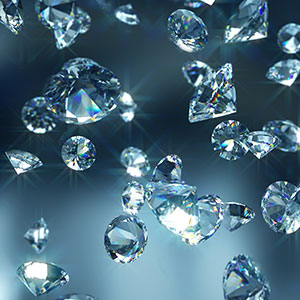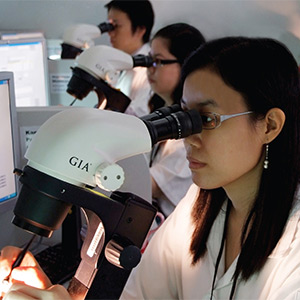
Most consumers have heard of lab-grown diamonds. They know they exist. But many still aren’t quite sure what they are.
That’s according to the latest chunk of research from the Plumb Club Industry and Market Insights 2021, which questioned 1,049 men and women, aged 25–60, in 10 key markets.
The survey found that 79% of those polled said that they were aware of lab-grown diamonds and their use in fine jewelry. However, 41% admitted to not understanding how they differed from natural gems.
That shows a greater need for consumer education, says Plumb Club executive director Lawrence Hess.
“Retailers that are doing well with [lab-grown diamonds] take a neutral approach and educate the consumer on their choices without bias,” he says. “I believe the consumer will pick up on bias.”
When asked to choose, 84% of consumers said they’d prefer to buy natural diamonds, while 16% said they would prefer a lab-grown.
Even so, respondents were hardly hostile to the category. Some 83% said that they would consider buying a piece of fashion jewelry with lab-grown diamonds, while 65% said they’d consider buying a lab-grown engagement ring.
“If you had posed this question a year ago, I don’t think you’d get those numbers,” says Plumb Club chief marketing officer Michael O’Connor. “They are growing, and that has to do with retailers and the way that they are presenting this. When retailers and brands [consumers] trust start carrying the product, it legitimizes it.”
Hess says he wasn’t surprised to see less demand for lab-grown engagement than lab-grown fashion.
“If you’re looking for a fashion ring, you’re buying the design, and if a diamond piece happens to catch your eye when you’re buying, you’ll get that,” he says. “With an engagement ring, most people buy the diamond first, then fashion a ring around it.”
The survey found that the key reasons for purchasing a lab-grown diamond piece are lower price (37%), differential in size for the money (25%), ethical reasons (20%), and perceived environmental benefits (18%).
“Value has always been a key driver of jewelry purchases,” O’Connor says. “It’s the price differential, the value for money, that’s what retailers are keying into.”
The survey didn’t break down consumer preference by age or other demographics, but the Plumb Club’s research has generally found that demographics are less important than “psychographics.”
“You have people saying things like ‘This isn’t your father’s car,’” says Hess. “But we’ve found it’s not really demographics, it’s more attitude. In our presentation, we have a picture of a grandmother and granddaughter wearing the exact same outfit.”
Hess says that unlike past surveys on this topic—which were often conducted by pollsters connected to miners or growers—this survey was “purely informational” and neutral, as his group contains sellers of both products.
All in all, Hess believes data shows the lab-grown category is here to stay.
“The attitudes toward lab-grown and natural diamonds will change,” he says. “We don’t know how they’ll change, but most certainly in two years it will be a different world because of COVID. So much is shifting so quickly right now.
“Do I think lab-grown will take over natural? No. But as it becomes more mainstream, it will become a percentage of sales and most retailers will carry it.”
The poll was conducted by Qualtrics as well as the Futurist, founded by Paola DeLuca.
(Photo: Getty Images)
- Subscribe to the JCK News Daily
- Subscribe to the JCK Special Report
- Follow JCK on Instagram: @jckmagazine
- Follow JCK on X: @jckmagazine
- Follow JCK on Facebook: @jckmagazine







